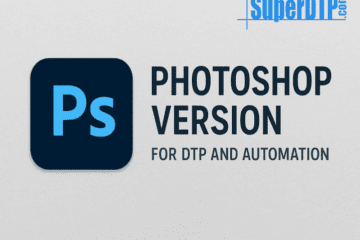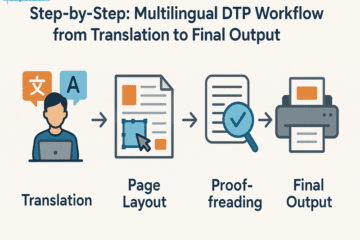The pressure to deliver results quickly can be immense. However, when speed becomes the primary focus, the quality of work can suffer.
Key Benefits of Faster Turnaround Time:
Competitive Advantage: The ability to deliver faster than competitors can increase customer loyalty and attract new clients.
Increased Efficiency: A streamlined process reduces downtime and allows teams to handle more projects.
Client Satisfaction: Customers often expect quick responses and deliveries, especially in industries with tight deadlines.
However, focusing solely on turnaround time can lead to rushed work, errors, and subpar results, which may harm long-term business relationships.
The Role of Quality in Business Success
While turnaround time is essential, quality should never be compromised. High-quality products and services build trust, establish credibility, and ensure customer satisfaction. When businesses consistently deliver quality, they reduce the likelihood of rework, complaints, and negative reviews.
Key Benefits of Focusing on Quality:
Reputation and Trust: Consistently delivering high-quality work builds a brand’s reputation and earns customer trust.
Customer Retention: Satisfied customers are more likely to return, which boosts long-term business success.
Reduced Costs: High-quality work reduces the need for rework, which can save time and resources in the long run.
However, aiming for perfection in every project can also slow down processes, leading to delayed deliveries and missed deadlines.
Strategies to Balance Turnaround Time and Quality. Balancing speed and accuracy requires a structured approach.
The Importance of Balancing Speed and Quality
It’s crucial to strike a balance between speed and quality because concentrating too much on one can have detrimental effects on the other. For instance, putting speed before quality can result in a lot of bugs and unhappy customers, yet concentrating only on quality can slow down delivery and make the business less flexible and adaptable to changes.
Benefits of balancing speed and quality include:
- Reduced Technical Debt: By maintaining quality while delivering quickly, teams can avoid the pitfalls of accumulating technical debt.
- Improved Customer Satisfaction: Delivering features quickly while ensuring they are high-quality enhances user experience and satisfaction.
- Sustainable Development Pace: Balancing speed and quality ensures that development teams can maintain a steady pace without burning out or compromising on standards.
Challenges in Balancing Speed and Quality
Although striking a balance between speed and quality is crucial, it’s not always easy. It might be challenging for engineering executives to keep this balance because of the challenges they frequently face.
Resource Constraints
Limited resources, including time, budget, and personnel, can make it challenging to achieve both speed and quality. Teams may need to make trade-offs, prioritizing certain features or fixes over others.
Changing Requirements
Regular modifications to project specifications can throw off development schedules and have an impact on the trade-off between quality and speed. To properly handle these changes, teams must be flexible and nimble.
Pressure to Deliver
The pressure to meet tight deadlines can lead to shortcuts that compromise quality. Engineering leaders need to find ways to manage stakeholder expectations while maintaining high standards.
The Growing Demand for Speed in Today’s Market
Today’s consumers have high expectations. They want things now. Whether it’s a product, service, or update, the demand for immediacy is higher than ever. With the rise of e-commerce, mobile applications, and cloud-based services, users have grown accustomed to getting what they need with minimal delay. For businesses, this means keeping up with the pace and ensuring that they can deliver products and services quickly to maintain customer satisfaction and remain competitive.
The adoption of Agile methodologies in software development and other areas of business management has fueled this demand for speed. Agile allows teams to iterate quickly, delivering smaller, incremental updates faster. The focus is on continuous improvement and ensuring that the product evolves based on real-time feedback. While this results in speedier releases, it often creates a challenge in terms of maintaining high-quality standards.
Why Speed Shouldn’t Compromise Quality
In the race to release new features and updates quickly, it’s easy to overlook quality. But failing to maintain high-quality standards can have dire consequences. Poorly executed products can lead to a range of issues, from dissatisfied customers to costly bugs and system failures.
1. Customer Experience Matters More Than Ever
In today’s competitive environment, customers expect a seamless, enjoyable experience. A poor-quality product or service will not only disappoint users but may also lead to churn. An app that crashes frequently, a website that lags, or a product that breaks easily can lead to frustration and ultimately loss of trust.
2. Long-Term Brand Reputation
While a company might initially benefit from rapid product releases, poor quality can erode trust over time. Quality is often what differentiates top-tier products from their competitors. Even if a product is delivered quickly, if it doesn’t meet expectations in terms of performance, functionality, or reliability, it will ultimately hurt the brand’s reputation.
3. Cost Implications
The idea that speed equates to savings is one of the most pervasive myths in business. On the contrary, rushing a product to market without proper quality assurance can result in costly rework, bug fixes, and customer support. What’s worse, these hidden costs can escalate if poor quality leads to serious operational or system issues, such as security breaches or major downtimes.
Set Realistic Deadlines and Manage Expectations
The pressure to deliver quickly can lead to unrealistic deadlines and poor decision-making. It’s essential for businesses to set realistic timelines that account for both speed and quality. If deadlines are too tight, teams may cut corners to meet them, which can compromise the product’s quality.
Managing expectations, both internally and with customers, is key. Disappointment can be prevented with clear communication on deadlines, capabilities, and product quality. A timely, high-quality product is preferable to one that is hurried and of poor quality.
A Fine-Tuned Balance Leads to Success
Balancing speed and quality isn’t just about making trade-offs; it’s about optimizing both. While speed helps companies stay competitive, quality guarantees that the final output meets client expectations. Striking the right balance between the two requires a combination of smart strategy, effective methodologies, and constant vigilance.
By embracing Agile practices, automating testing, integrating robust QA processes, focusing on user-centric design, fostering collaboration, managing expectations, and monitoring performance, businesses can deliver high-quality products faster without compromising on user satisfaction. In the end, the goal is simple: deliver the best product as quickly as possible while keeping customers happy and engaged. When businesses achieve this balance, they position themselves for long-term success.
Super DTP Ltd is a specialized desktop publishing agency located in Gabrovo, Bulgaria, offering book publishing, multilingual DTP, and E-learning localization services to translation agencies and localization companies worldwide! Check our services at www.superdtp.com or contact us at dtp.bulgaria@gmail.com for further details.


